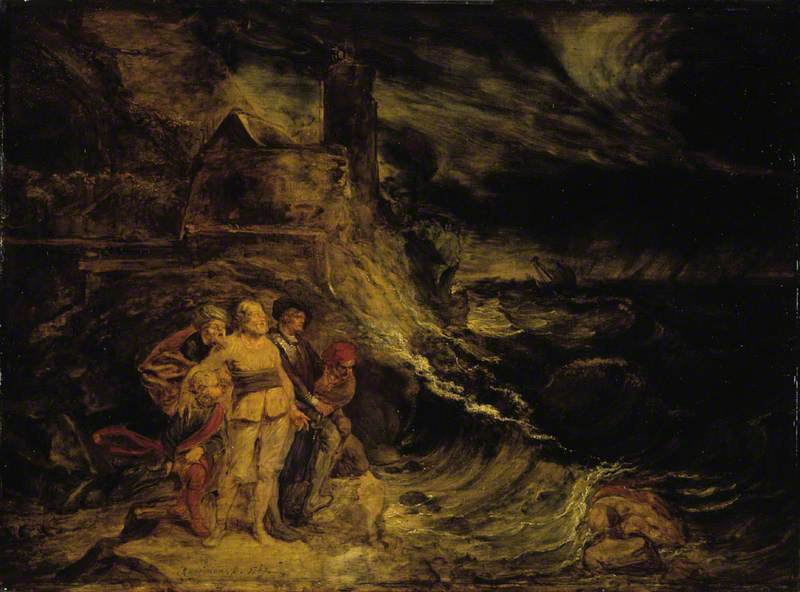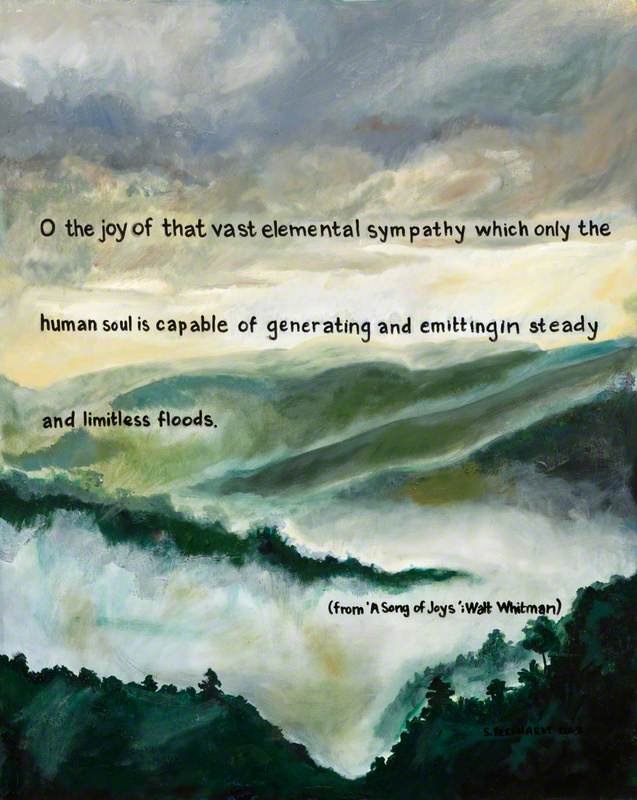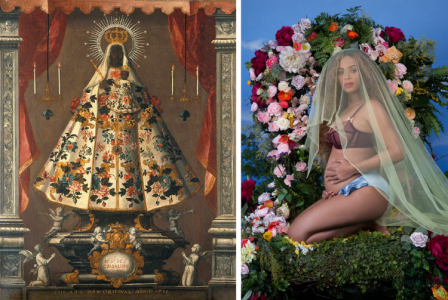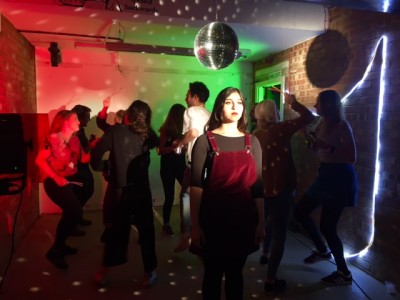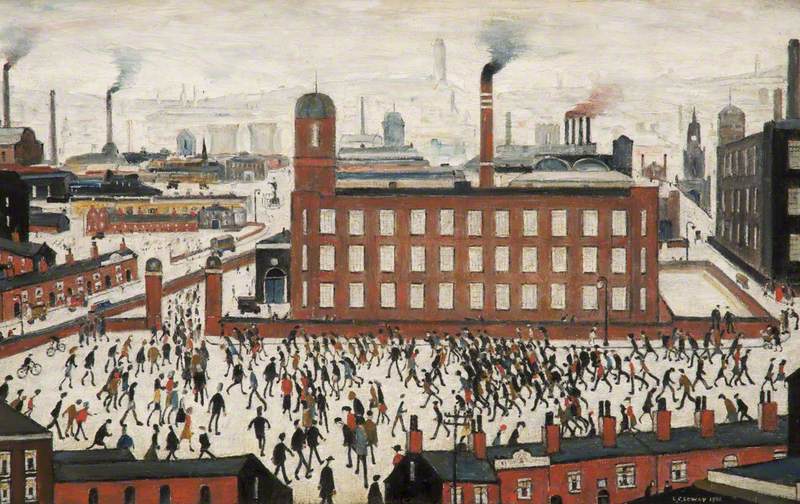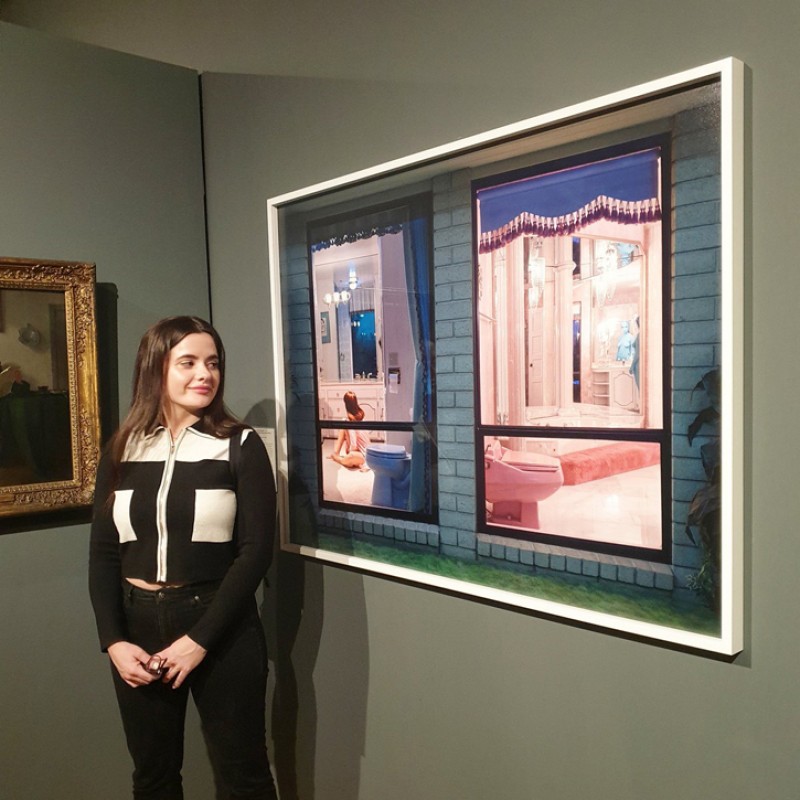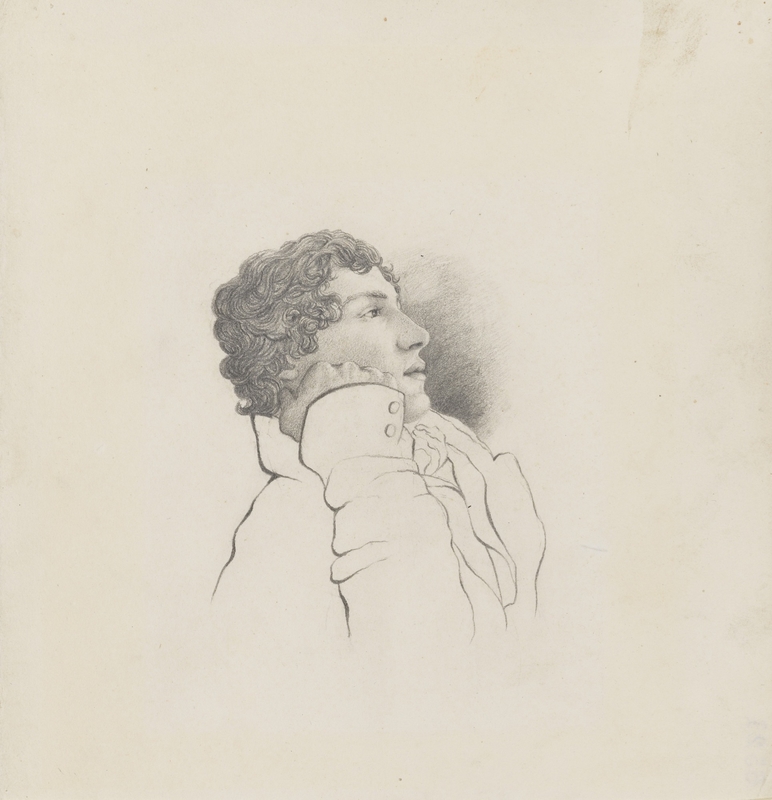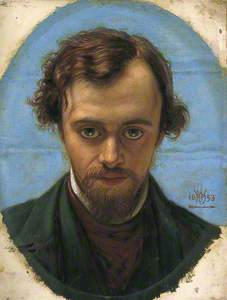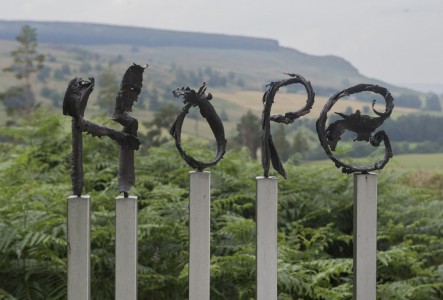We challenged four poets to create an original piece inspired by a painting of their choice from Art UK.
We are the new day Raphaelites, we come armed with quills and ink. We'll give them all we've got to offer, fam we'll throw in the kitchen sink. Who said that poetry can't be gangster?
The painting: Dante Gabriel Rossetti (1828–1882), by William Holman Hunt
This painting of a romantic young Rossetti was made shortly after his death in 1882, and subsequently hung in William Holman Hunt's drawing room. It was based on an original chalk drawing of an almost identical size, now in the collection of Manchester Art Gallery.
The original drawing was from 1853, when members of the Pre-Raphaelite Brotherhood decided to make portraits of each other to send to their friend Thomas Woolner, who had emigrated to Australia the previous year. The remaining members of the brotherhood met in Millais' studio to work, and Rossetti and Hunt ended up making sketches of each other simultaneously.
This helps to explain Rossetti's unusual expression and intense gaze. Captured here, he's doing more than looking at his friend: he's examining his subject, caught between looking down at his paper and at Hunt, sitting across from him.
However, the portrait also captures Rossetti's intense personality and the charisma that allowed him to be a driving force in the Pre-Raphaelite movement. It's of particular poignance that the painting was made after Rossetti's death: Hunt is looking back to when he and his close friend were young and full of passion and drive, back to a time when they were artists who felt that it was them against everyone else.
Hunt himself recounted that the portrait was painted at an emotional time, when he was recalling his friend and 'memories of early days when, partly by the noisy blundering of followers we were driven to stand as though we were reckless in our challenges of the whole world'.
(Information courtesy of Birmingham Museum and Art Gallery).
The poet: Raza Hussain

I feel like Birmingham has welcomed change as emphatically as the Raphaelites wanted to implement it.
What drew you to the painting you chose?
Dante Gabriel Rossetti was an iconic figure of his era. His remarkable stories and legend lives on through the bloodline of creative change makers and revolutionists alike – his importance is recognised even today. The Raphaelites had a significant part to play in allowing freedom to be expressed and liberty to be felt. They did what they did to bring new life into a very structured world; the image of Rossetti is an iconic and profound symbol of passionate creative madness – the kind to change perspectives – the kind to change the world.
Why did you choose to write about identity?
I chose to write about identity because of my own struggle to find who I was and where I belonged. Since moving to Birmingham nearly 10 years ago I was able to discover just that in a city that was re-establishing its own identity. I feel like Birmingham has welcomed change as emphatically as the Raphaelites wanted to implement it. Both aim(ed) to achieve such accomplishments through creative mediums. Be it through voicing the opinions of the younger generation or radicalising the the ideologies surrounding acceptance – change was accepted. Birmingham represents my identity – so it was only fitting to write a piece dedicated to my greatest source of inspiration – my city.
What were the challenges in writing a poem specifically about a painting?
The challenges I found largely revolved around trying to capture the mentality of Rossetti in a poem. I believe he was a man who was passionate about freedom; freedom of mind and thought as well as freedom of body and soul. The ambitious vision of the Raphaelites was essentially to set a powerful example for people to see that expressing yourself through mediums that didn't conform to societal norms was okay. Furthermore, he was painting a portrait of William Holman Hunt at the same time Hunt was painting the portrait of him – I felt as if the creative vision he was reveling in can be seen in his eyes in the painting. My biggest challenge was trying to convert the expression into words; to make the poem powerful, to set an example and to send a similar message.
How long have you been performing poetry?
I have been performing for the past nine years. What I have learned along the way is you don't have to be a poet to write a poem. Your poetry is in your expression. It doesn't have to be words perfected and edited – poetry comes from what you feel – how passionate you are about how you feel is how powerful your poetry is.
What would your advice be for someone trying performance poetry for the first time?
Bring your expressions to life – communicate with your audience through your paintbrush, through your pen, your quill, your camera. Remember – your most important audience is YOU. So long as what you do, what you say, what you feel, is for you – you are untouchable.
Where can people see more of your work?
Instagram, SoundCloud and Twitter: @Wuzzamill
Facebook: @Wuzza Razz
The gallery: Birmingham Museum and Art Gallery

Birmingham Museum and Art Gallery (BMAG) first opened in 1885. There are over 40 galleries to explore that display art, applied art, social history, archaeology and ethnography.
The art gallery is famous for its Pre-Raphaelite paintings, which are part of the largest public Pre-Raphaelite collection in the world and includes Rossetti's famous works Proserpine and Beata Beatrix. The gallery also includes the largest collection of Burne-Jones paintings in the world. BMAG's collections have been designated as 'outstanding' by the Department of Culture, Media and Sport.
Explore more
If you're feeling inspired, you can explore art near you by finding your closest venue: there are museums, galleries and more from all over the UK.
Or, you can keep looking at artworks online. Why not try exploring more Pre-Raphaelite works, by Rossetti's friends William Holman Hunt and John Everett Millais, or look at other paintings associated with Birmingham? For more poetry, check out the other films in our 'Art Speaks' series, by Sabrina Mahfouz, Sophia Thakur and Rowan McCabe.


